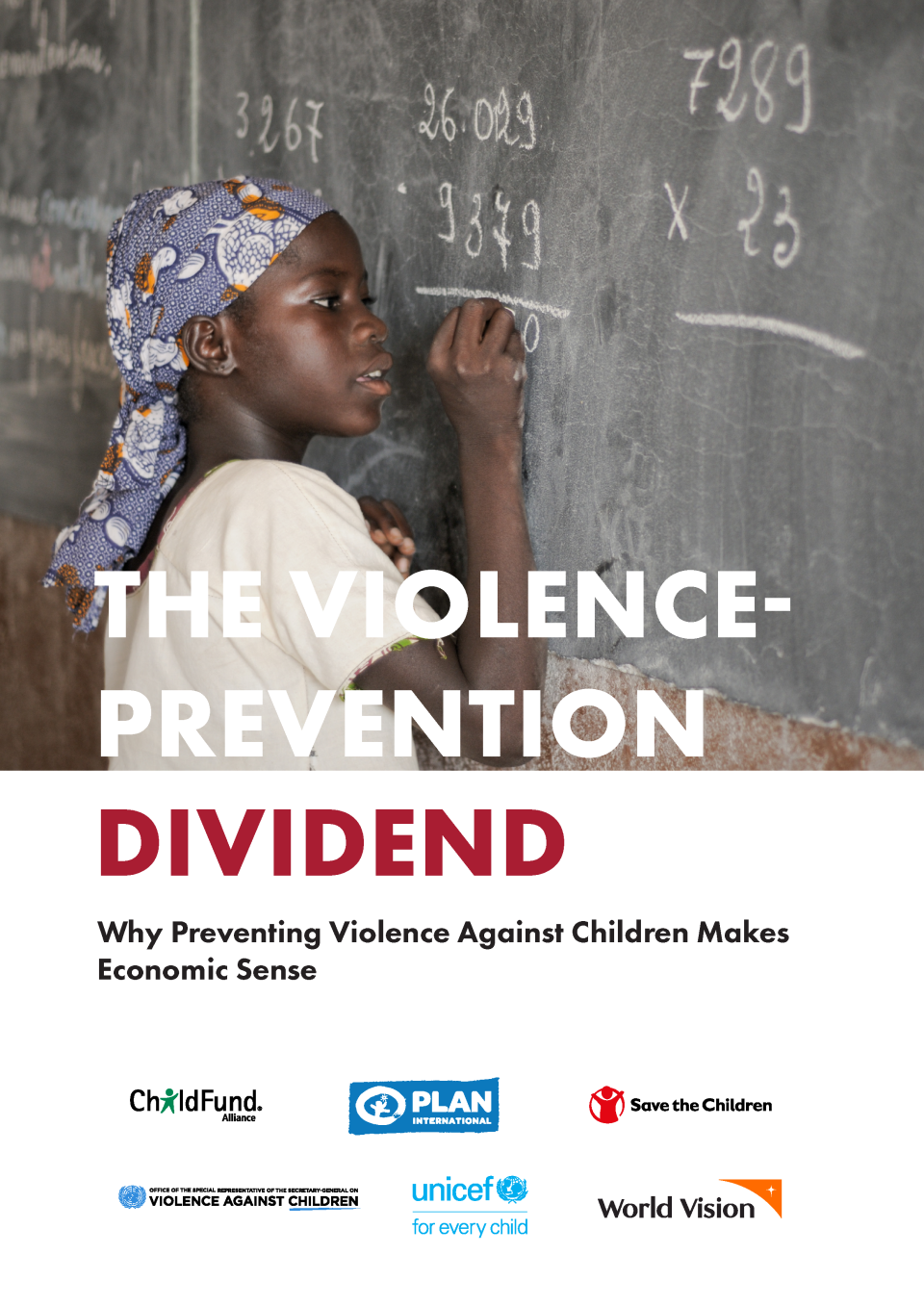- عربي
- 中文
- English
- Français
- Русский
- Español
The Violence Prevention Dividend - Why Preventing Violence Against Children Makes Economic Sense

Beyond its direct impact, violence can have long term economic and social costs. Violence against children undermines the efficiency and effectiveness of all government investments in services for children, including antenatal care, nutrition and parenting programmes, early childhood development, social protection and education. The pervasive effects of violence against children hamper both individual and social development and hold back future national economic growth.
Ending violence against children offers the potential to generate large social and economic dividends. It would remove a critical barrier to children achieving their full developmental potential and could save costs to societies that have been estimated to be up to 5% of national GDP.
Governments which direct resources towards ending violence against children are also upholding children’s rights to survival, development and protection; they are also meeting their obligation to care and protect children to “the maximum extent of their available resources. ”Such investments are also essential in adhering to their pledge to create a world “free from fear and violence” made in the 2030 Agenda for Sustainable Development.
This paper gives an overview of the economic case for investing in the prevention of violence against children. It is intended to alert policymakers to the substantial economic and social costs of violence against children and the potential dividend that would accrue from investment in violence prevention. The paper outlines where governments can strengthen and improve engagement in violence prevention in light of post COVID-19 recovery planning and beyond
The investment case supports a Call to Action for governments and development partners to increase the resources currently allocated for the prevention of violence against children and to use resources even more effectively.
Download the publication

